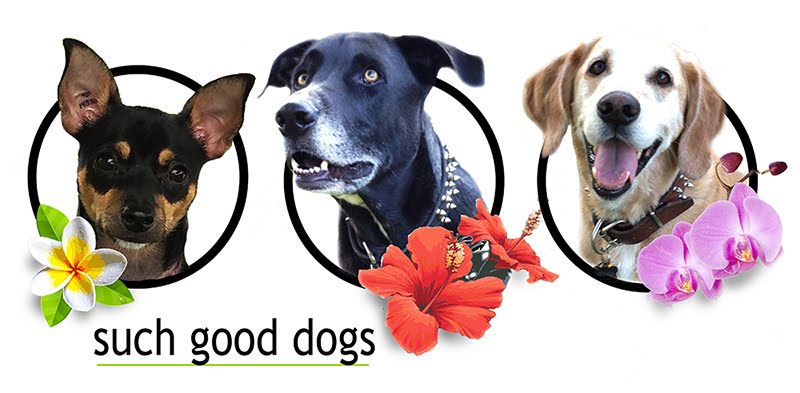There are many different dog training methods and ideologies out there. To help you get a little understanding and be better able to pick the right trainer for you and your dog, I have listed below the three basic types of dog training philosophies.
1) Positive-Only Trainer.
These trainers will only use positive reinforcement training methods. Trainers in this category will NEVER use corrections or punishment in their training programs. The standard for positive-only trainers is use of food rewards.
2) Balanced Trainer.
A balanced trainer will use positive methods whenever introducing new behaviors, customarily rewarded with food or toys. Physical corrections are only used when all other training methods have been tried and failed. The balanced trainer rarely has use for corrections. To shape new behaviors, the balanced trainer will use the No Reward Marker and occasional negative punishment (removal of a reward).
I would consider myself a balanced trainer. I am familiar with both compulsion training and positive reinforcement. I have seen how amazingly well positive reinforcement works for both the dog and the owner, and I always use this method of training. Only when all other training methods have been exhausted would I try harsh methods or punishment.
I also believe that being a balanced trainer means helping your clients get a well balanced dog.
Such Good Dogs firmly believes that all living creatures must find the correct balance of energy to be both happy and healthy. When training dogs, it is extremely important to be aware of your own energy. Dogs pick up on our energy and what we may be feeling without us even realizing they have done so. Further more, if you are unaware of your energy and try to train your dog when you are angry or frustrated, the dog will sense this and your training session will not go very well. In fact, you can actually set back progress of your training by doing so when you do not have the proper energy and mind-set. Life is all about finding balance. We can teach you how to find balance for you and your dog.
3) Compulsion Trainer.
Trainers in this category have the attitude of, "do it because I said so." Compulsion trainers use punishments such as leash corrections to not only introduce new cues, but to train and maintain new behaviors as well. The only motivation for the dog to comply is to avoid correction. Compulsion trainers often use Prong and choke collars in training. I am happy to say that this method of training dogs is now considered the "old school" way of thinking. I would not recommend trainers who only use compulsion training methods.
1) Positive-Only Trainer.
These trainers will only use positive reinforcement training methods. Trainers in this category will NEVER use corrections or punishment in their training programs. The standard for positive-only trainers is use of food rewards.
2) Balanced Trainer.
A balanced trainer will use positive methods whenever introducing new behaviors, customarily rewarded with food or toys. Physical corrections are only used when all other training methods have been tried and failed. The balanced trainer rarely has use for corrections. To shape new behaviors, the balanced trainer will use the No Reward Marker and occasional negative punishment (removal of a reward).
I would consider myself a balanced trainer. I am familiar with both compulsion training and positive reinforcement. I have seen how amazingly well positive reinforcement works for both the dog and the owner, and I always use this method of training. Only when all other training methods have been exhausted would I try harsh methods or punishment.
I also believe that being a balanced trainer means helping your clients get a well balanced dog.
Such Good Dogs firmly believes that all living creatures must find the correct balance of energy to be both happy and healthy. When training dogs, it is extremely important to be aware of your own energy. Dogs pick up on our energy and what we may be feeling without us even realizing they have done so. Further more, if you are unaware of your energy and try to train your dog when you are angry or frustrated, the dog will sense this and your training session will not go very well. In fact, you can actually set back progress of your training by doing so when you do not have the proper energy and mind-set. Life is all about finding balance. We can teach you how to find balance for you and your dog.
3) Compulsion Trainer.
Trainers in this category have the attitude of, "do it because I said so." Compulsion trainers use punishments such as leash corrections to not only introduce new cues, but to train and maintain new behaviors as well. The only motivation for the dog to comply is to avoid correction. Compulsion trainers often use Prong and choke collars in training. I am happy to say that this method of training dogs is now considered the "old school" way of thinking. I would not recommend trainers who only use compulsion training methods.





